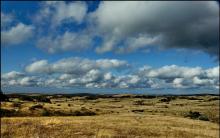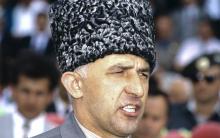When the swords stopped ringing and Sultan Muhammad handed over the keys to Granada to Ferdinand and Isabella- to the Spanish royal couple, a great era has ended. January 2, 1492 Spain ended almost 800 years of struggle against the Arab conquerors, strengthened in battle and becoming a strong, unified state. After the expulsion of the Moors(as the Arabs were also called in Spain) from their last stronghold - the Emirate of Granada - the kingdom no longer needed a large army, and many soldiers were sent home. But former soldiers and their children continued to dream of new battles, brilliant victories and trophy treasures.
Fortunately for them, the same In 1492, the first expedition of Christopher Columbus returned to the shores of Spain. with the news of the discovery of new lands overseas. It was there, to the New World, that Spanish adventurers now rushed. Those who liberated the country from Arab conquerors themselves became conquerors, or in Spanish "conquistadors".

Conqueror of the Indian Inca Empire Francisco Pizarro
One of the most famous conquistador leaders, born in 1475 in Trujillo. Deciding to try my luck in distant lands, in 1502 he went to Hispaniola, a large island in the Caribbean. Then, together with the expedition Alonso de Ojeda Pizarro sailed to the territory of modern Panama, where, together with another conquistador Vasco Nunez de Balboa captured the Indian settlement of Darien and founded a new colony.
The conquistadors did not yet know that they were on a narrow isthmus separating two great oceans - the Atlantic and the Pacific. One day the Spaniards heard from the Indians about "great waters", which begin somewhere there, beyond the jungle.
 In 1513
, having equipped a small flotilla, Pizarro and Balboa set off along the Atlantic coast of the Isthmus of Panama. Thanks to some miraculous coincidence, the Spaniards dropped anchor precisely in the place where the oceans are separated only by a relatively narrow strip of land. Part of the crew, led by Balboa, embarked on a trek through the jungle, and after several days of difficult travel and skirmishes with hostile Indians, the Europeans reached the Pacific Ocean for the first time in history.
In 1513
, having equipped a small flotilla, Pizarro and Balboa set off along the Atlantic coast of the Isthmus of Panama. Thanks to some miraculous coincidence, the Spaniards dropped anchor precisely in the place where the oceans are separated only by a relatively narrow strip of land. Part of the crew, led by Balboa, embarked on a trek through the jungle, and after several days of difficult travel and skirmishes with hostile Indians, the Europeans reached the Pacific Ocean for the first time in history.
Now facing the Spaniards who settled on the Pacific coast the path was opened to the south, to the Andes — mountain system stretching along the South American continent. Pizarro's imagination was excited by Indian stories about a vast and rich empire spread out in Peru, a remote mountainous country in the south.
In 1524 Having achieved the favor of the Spanish governor, the conquistador gathered a detachment and sailed on his first expedition. The Spaniards explored the coast in the area of present-day Colombia and, not finding any rich countries, returned back.
Two years later Pizarro and his companion Diego de Almagro equipped a new, larger and better armed expedition and moved further south. Eventually the Spaniards reached the Bay of Guayaquil and arrived in Tumbes, one of the cities of the Inca Indian Empire. It was here that Pizarro realized that the stories he had heard back in Panama were not fiction. In the Andes there really is a rich and well-organized state with a large population and developed crafts. And, most importantly, the Indians had a lot of gold.
However, there was no point in even thinking about setting off with a small detachment to conquer the Indian empire. In addition, the royal government refused to support Pizarro. Governor of Panama. And the conquistador, leaving his representative in Tumbes, goes to Spain, to the royal court
King Charles V of Spain receives as a gift from Pizarro gold, rich fabrics and a strange South American animal brought from the expedition - a llama. After listening to the conquistador, the king grants him title of Captain General of Peru and gives authority for the conquest of the mountain empire for the Spanish crown.

At the head of a small army in July 1529 Pizarro sets sail for Peru. But the expedition did not start very well. The Spaniards were unable to reach the Gulf of Guayaquil due to strong headwinds. We had to land ashore half a thousand kilometers to the north and wade through the jungle for several months to get to Tumbes. But the city lay in ruins. There was a civil war in the Inca Empire. The sons of the deceased emperor Huascar and Atahualpa fought for their father's inheritance.
It was impossible to think of a better moment to take possession of an empire weakened by strife. Having established himself in Tumbes, Pizarro sent for reinforcements.
By the spring of 1532 everything was ready. The conquistadors moved south.
With a detachment of approximately 200 fighters and about 60 horses, Pizarro approached the city of Cajamarca. One of the pretenders to the throne, along with his forty thousand army, was camped nearby. To lull the Peruvian leader's vigilance, the leader of the conquistadors exchanged friendly messages with him, in one of which he invited him to a personal meeting. It is still impossible to understand what made the Indian king commit such a frivolous act, but he agreed. He arrived at the meeting accompanied by five thousand unarmed warriors. Servants carried the king in a luxurious palanquin decorated with parrot feathers. As soon as the procession approached the Spaniards, Pizarro said two words: "Saint James". This was a prearranged signal, upon hearing which the soldiers attacked the unarmed Indians, and soon the entire land was strewn with corpses. The Incas were shot with arquebuses and bows, chopped with swords and stabbed with spears.
 Pizarro was personally captured.
A huge ransom was assigned for the life of the leader - a large room filled with gold and silver. The dream of the Spanish adventurers finally came true - they became fabulously rich. However, the ransom did not save Atahualpa’s life.
Pizarro was personally captured.
A huge ransom was assigned for the life of the leader - a large room filled with gold and silver. The dream of the Spanish adventurers finally came true - they became fabulously rich. However, the ransom did not save Atahualpa’s life.
As an enemy of the Christian faith, he was sentenced to be burned at the stake. To avoid this painful execution, he converted to Catholicism. Now they just cut off his head. At this time, it became known that far to the south, in the city of Cuzco, Atahualpa’s rival, Huascar, was poisoned.
Pizarro with a detachment of 100 horsemen and 30 infantry hurried there to take advantage of the confusion to complete the conquest of the Indian empire. Almost 1000 kilometers from Cajamarca to Cusco, the conquistadors moved through the mountains along a magnificent road laid by the Indians themselves.. Several battles took place between the Spaniards and the numerically superior Incas troops, but military luck was on the side of the European cavalrymen. Pizarro captured Cusco, and in 1535 founded his capital of Peru, Lima.
Why did the Indian empire, which had a population of six million and a large army, submit to a handful of Spanish adventurers? Maybe because the Spaniards had horses and firearms, which the Incas did not?

But ancient arquebuses, which, by the way, Pizarro’s soldiers didn’t have very many of, are very bulky and inconvenient to use. It was almost impossible to conduct targeted fire from them, and while the shooter was reloading this half-gun, half-cannon, a skilled archer could shower him with a whole hail of deadly arrows. Yes, there were no horses in the New World, but really, thousands of Indian armies couldn’t cope with hundreds of horsemen, setting them up in a good ambush? Failed. We failed.
Pizarro found the Inca Empire in a state of internal discord, and this helped him.
The system of power that existed in Peru also helped the conquistadors.
Too much depended on the leader, the king, the leader. It was enough to behead the country by treacherously capturing him, and his huge army lost the will to resist.
The conquistadors turned to the benefit and achievements of Indian civilization - they were greatly helped by the excellent roads carved by the Indians among the impassable mountains.

But this is probably not the main thing . The Spaniards turned out to be stronger in spirit. The inhabitants of the Peruvian mountains were simply at a loss in the face of brave, decisive, treacherous and cruel conquerors. After the arrival of the conquistadors, the Indians tried to rebel for about 30 years, but nothing threatened the power of the Spanish crown.
Serious strife began only between the conquistadors themselves. When former partners - Pizarro and Diego de Almagro- it came to military clashes. Pizarro prevailed, and his opponent was executed. But July 26, 1541 the great conquistador in Lima Francisco Pizarro fell by the hand of his son Diego de Almagro. The cruel conqueror met a cruel death. But his life is forever inscribed in the history of the discovery and development of America.
©When using this article partially or fully - an active hyperlink link to the site is MANDATORY











The most beautiful motorcycles in the world
Which sea is the cleanest in the world?
Top 10 Most Expensive Furs
The largest and most luxurious casinos in the world
Knightly orders of Europe XI - XIII centuries